Spring
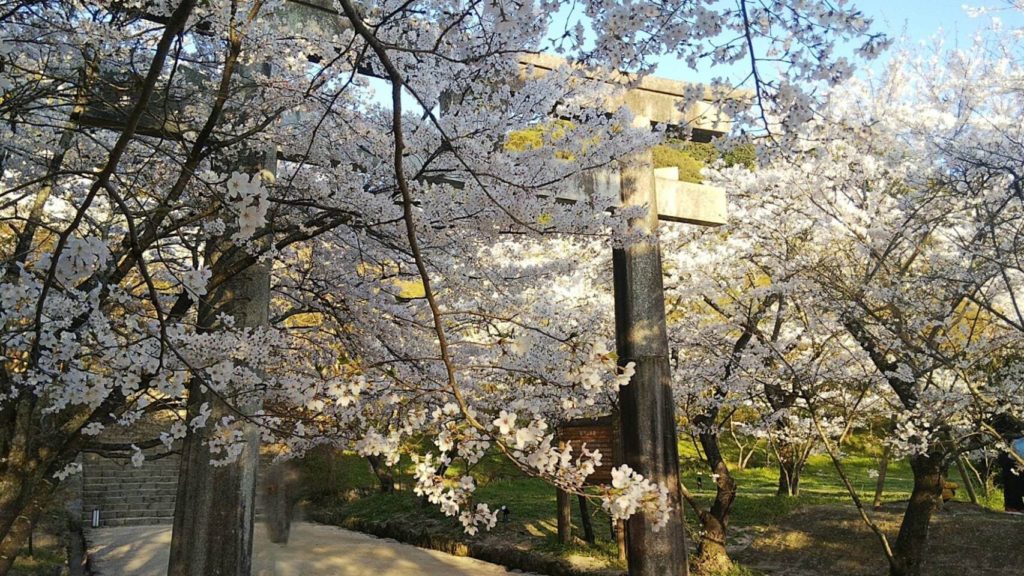
Cherry-blossom Viewing
Late March to Early April
There are many places to enjoy cherry-blossom viewing in Dazaifu City, such as Dazaifu Tenmangu Shrine, Homangu Kamado Shrine, Dazaifu Government Office Ruins, Mizuki Fortress Ruins and along the river behind the City Hall. Spring is everywhere.

Fresh Green Leaves
Mid. April to Late May
Fresh young leaves come to life from the ancient camphor trees as a sign of renewing growth. The one towering to the left of the main shrine is estimated at least 1,500 years old.
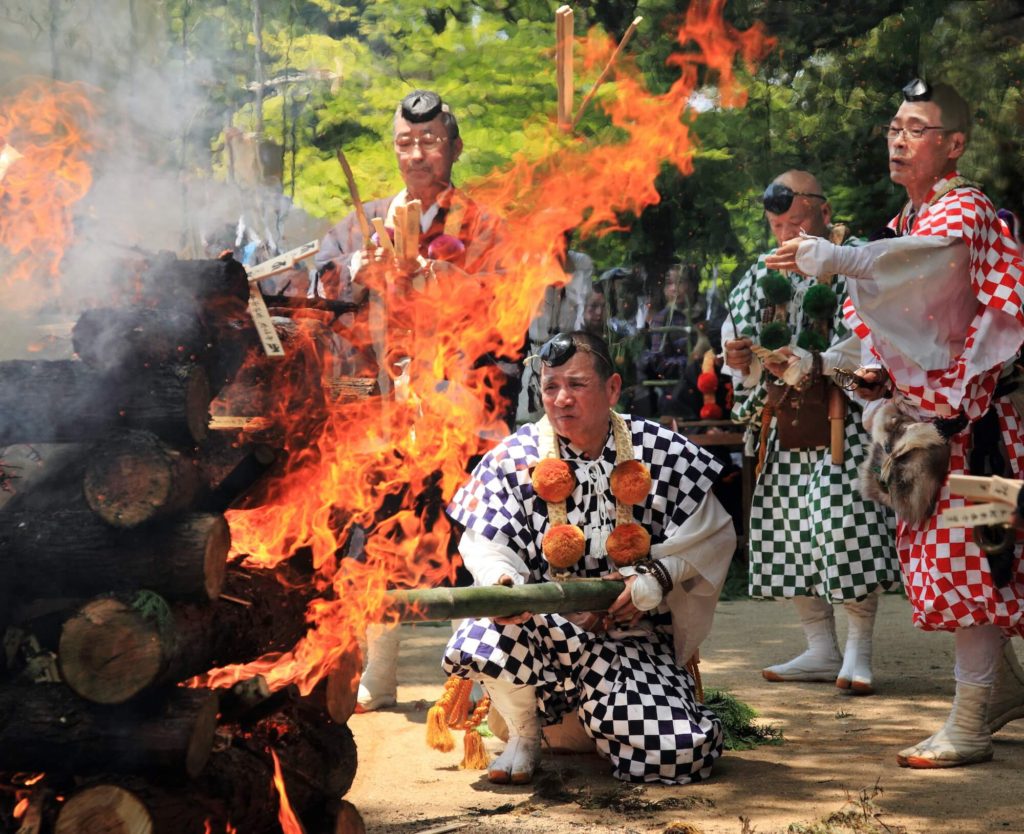
Goma Fire Ritual
Last Sunday in May from 10:30AM
Write your wish on a wooden stick called Gomagi and toss it into the fire. After the fire has burned out, walk barefoot over coals to burn away bad luck. Also, you can enjoy Chikuzen biwa, a lute performance and watch an initiation ceremony of mountain priests.
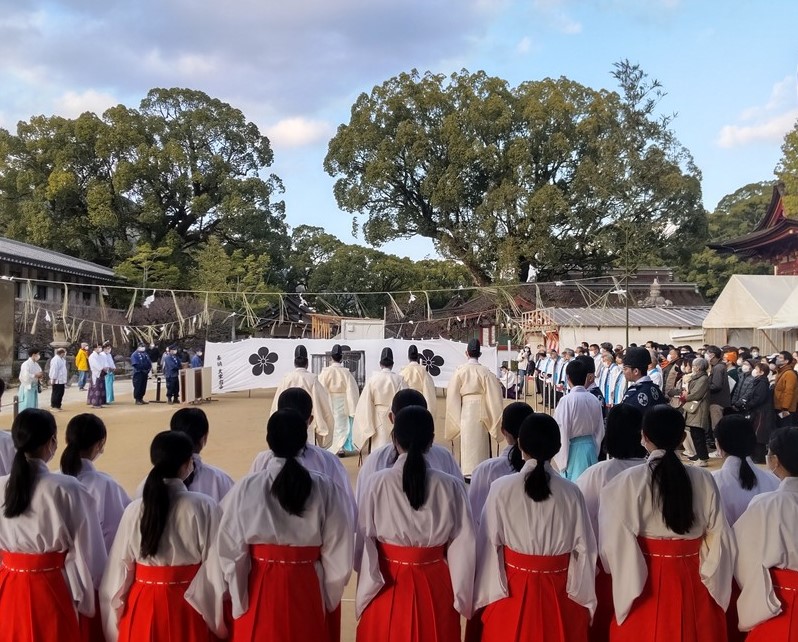
Great Purification Ceremony
June 30 and December 31 from 4PM
The Oharae Ceremony, the Great Purification Ceremony is an ancient Shinto ritual held twice a year, June 30 and December 31. Participants are given Katashiro, man-shaped cut paper, and transfer their sins and wrongdoings to the paper, then toss it into a sacred fire and burn it. This ceremony removes our impurity of the first half of the year ending in June and purifies ourselves to start the next 6 months with fresh mind.
Summer
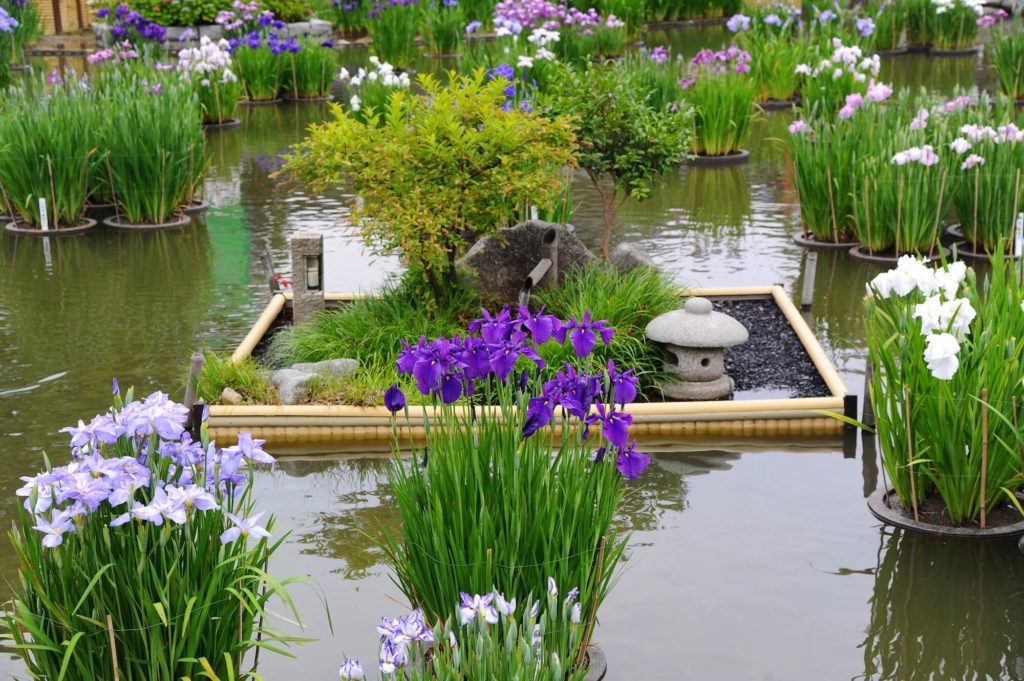
Seasonal flower in June ~Irises~
Early June to Mid.June
There are 30,000 Irises, 55 different varieties growing in the pond just to the right of the Taikobashi bridge. As summer begins, these flowers start blooming and are a beautiful sight to be enjoyed by everyone.

Tanabata Festival
July 7
Tanabata, also known as The Star Festival is held on July 7. People write their wishes on colorful paper strips and hang them on bamboo branches, which is said to make wishes come true. There are music concerts and a dancing performance around the illuminated Shin-ji ike pond.
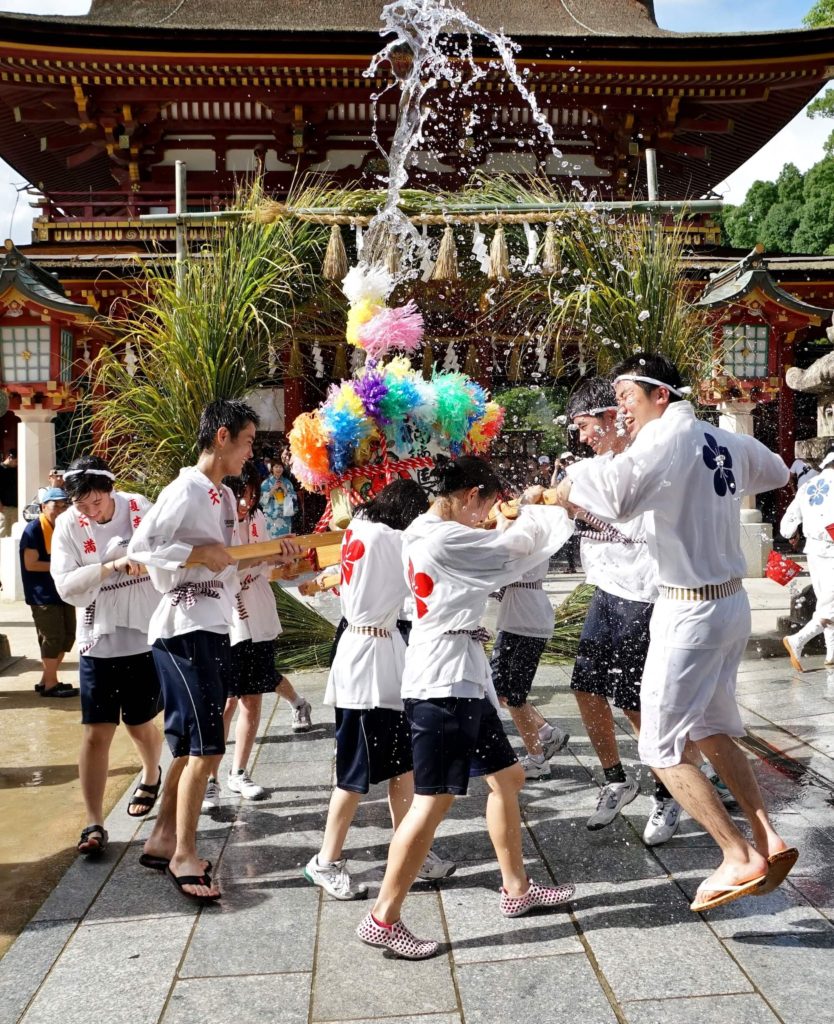
Summer Tenjin Festival
July 24 and 25
Celebrate the birth of Sugawara Michizane, the deity of Learning. Fun events and activities are held in the ground of Dazaifu Tenmangu Shrine. Watch the parade where children carry a portable shrine on the street near the shrine. Pass through chinowa, woven hoop, for good health. You can also join the bon-odori dance, traditional summer event with Yukata. Religious dance performed by shrine maidens, gives you an essence of Japanese culture. On the evening of July 25, the thousand candles are lit around the Shinji-ike pond and celebrate the life and achievements of Sugawara Michizane.
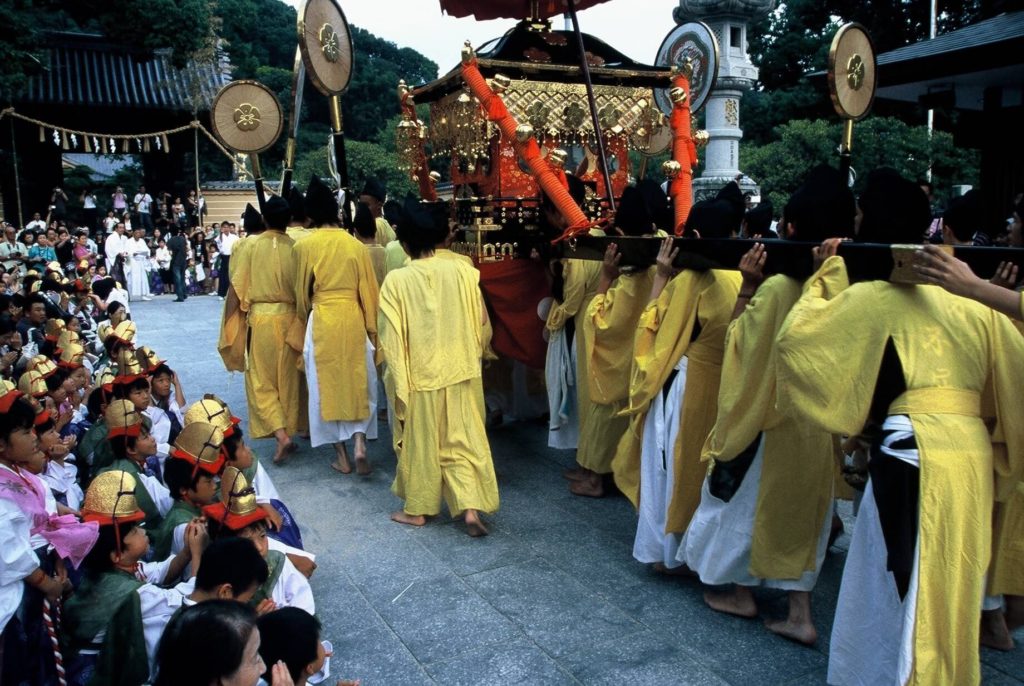
The Grand Procession of Sugawara Michizane
September 21 to 25
Dazaifu Tenmangu Shrine and Enoki Shrine
This is the most important event of Dazaifu Tenmangu Shrine.
Once a year, Mikoshi, a portable shrine, symbolizing Sugawara Michizane, the deity of learning, is carried from Dazaifu Tenmangu Shrine to Enoki Shrine, accompanied by several hundred people dressed in Heian-period (794 to 1185 AD) costumes. On the eve of the Autumnal Equinox Day, the spirit of Sugawara Michizane comes to visit Enoki Shrine, where he lived in exile. The next day, it returns to Dazaifu Tenmangu Shrine. At night on September 25, religious dances and traditional music are performed at Shinji-ike pond.(pond shaped like the Japanese character “Shin”, meaning heart) The pond is beautifully illuminated with lanterns and 1,000 candles. It is an autumn festival to seek Michizane’s divine virtues and give thanks to the gods for an abundant crop.

Dazaifu Lantern Festival
September 23 and 25
Dazaifu Tenmangu Shrine, Dazaifu Government Office Ruins and Mizuki Fortress Ruin
Lantern festival is held in Dazaifu City areas during Jinko-shiki, the Grand Procession of Sugawara Michizane. The area’s historical sites, shrines and temples are lit by thousands of lanterns handmade by children in the local community. Walk around the areas with a portable lantern and rediscover the beauty of Dazaifu City. (Portable lanterns can be purchased at several locations.)
Autumn
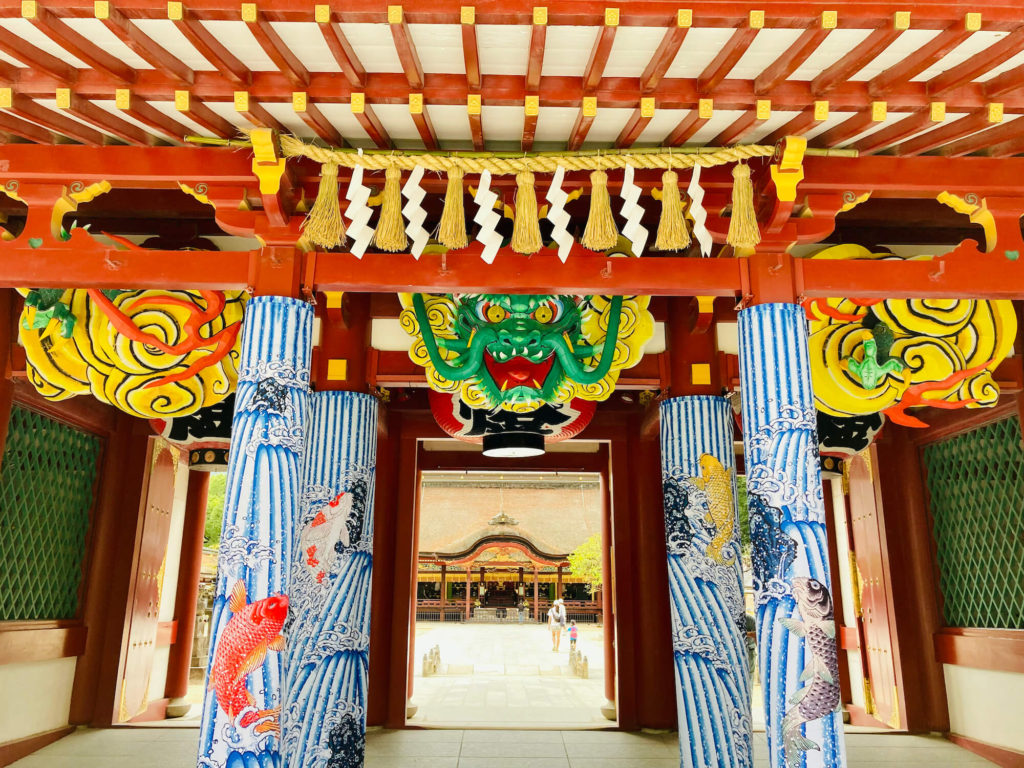
Special Prayer for Success in Examination
October 1 to 31
Dazaifu Tenmangu Shrine enshrines Sugawara Michizane as the deity of learning, culture and arts. Students are welcome to pray for their academic success during the month of October.
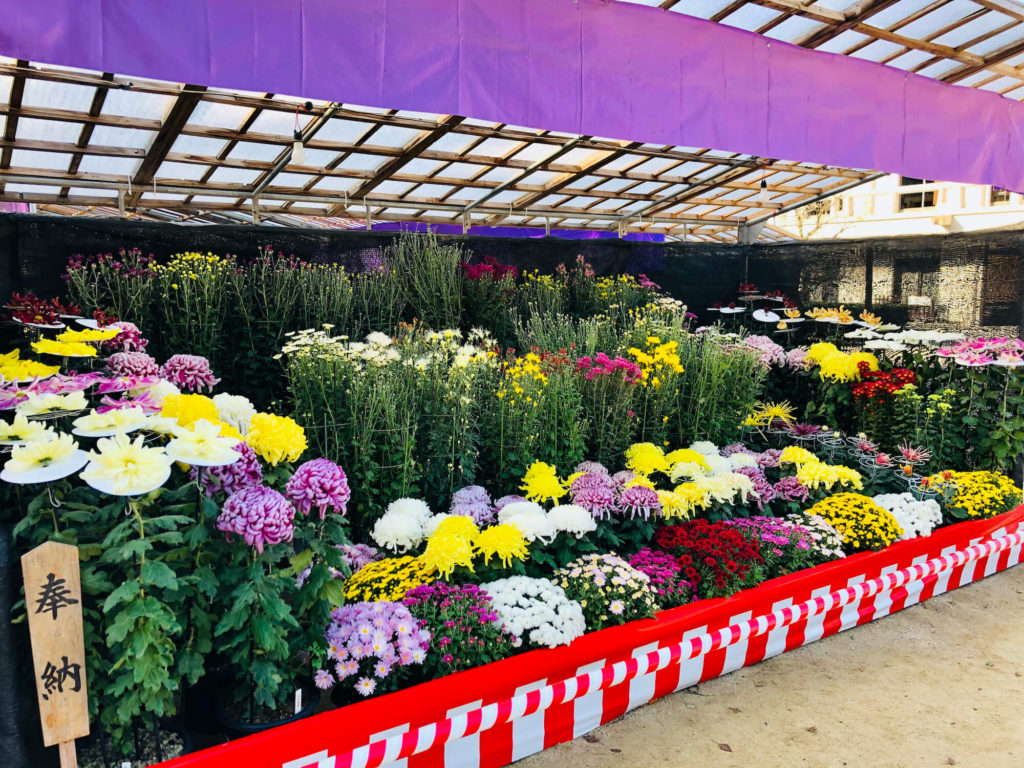
Chrysanthemum Festival
November 1 to 25
Sugawara Michizane, the deity of learning enshrined in Dazaifu Tenmangu Shrine, loved chrysanthemum. In November, Chrysanthemum Festival is held and showcases thousands pots of chrysanthemums by local chrysanthemum growers.

Autumn Leaves
Mid. November to Late November
Beginning the middle of November, leaves turn red and yellow. Homangu Kamado Shrine is one of the popular places to enjoy autumn leaves. The Momiji Festival is held and the autumn leaves are lit up at night.
Winter
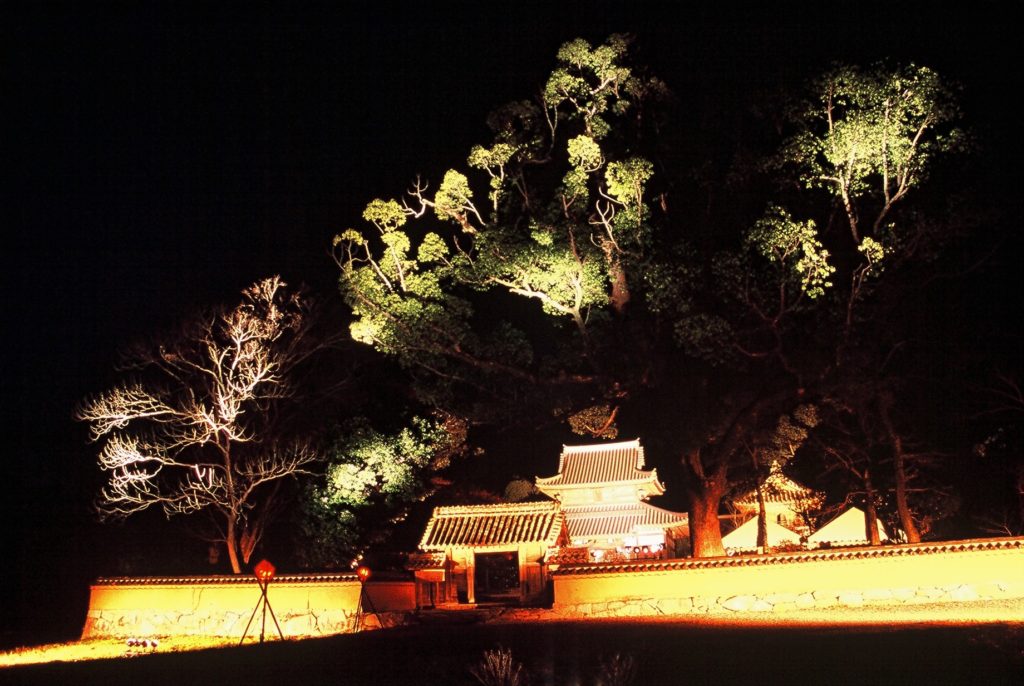
Illumination on New Year’s Eve
December 31
Kanzeonji Temple is lit up on December 31. Gentle lights surround the temple and provide a good atmosphere.
At Kaidanin Temple, located next to Kanzeonji Temple, temple bells are rung 108 times around 12AM on New Year’s Eve. It is said that human beings have 108 earthly desires and temple bells purify them.

First Shrine Visit of New Year
January 1 to 3
Japanese people visit a shrine during the first three days of the year. This is called Hatsumode. People pray for their health and happiness in the new year. Dazaifu Tenmangu Shrine has over 2 million visitors during the period.
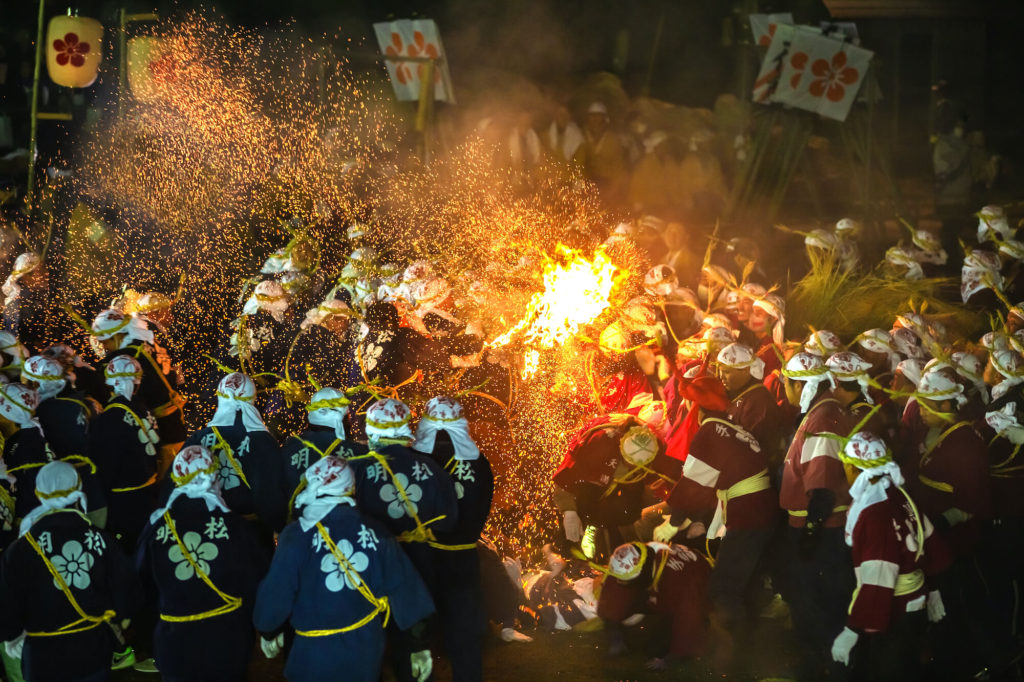
Onisube・Usokae
January 7
Usokae Festival is held on the night of January 7 every year. Participants gather to exchange ‘uso’, wooden hand-carved bullfinch. Exchanging bullfinch (uso, also means lie in Japanese and used as a pun) turns the lie into the truth and will bring happiness and prosperity for the new year.
Onisube, Ogre Exorcism Fire Festival, is held after Usokae Festival. About 300 men holding large placards, sticks and torches are divided into three groups. One is a team dressed as ogre, second one is called Subete, the ogre chasers, the other is called Onikeigo, the ogres guards. The purpose of the Fire Festival is to drive out the evil spirits and bring in good luck.

Plum blossom-Viewing
Late January to Early March
There are approximately 6,000 plum trees of about 200 varieties in DazaifuTenmangu Shrine, reflecting the deity of learning Sugawara Michizane’s lifelong affection for the trees and their blossoms. The most famous is the one to the right of Honden, main shrine, known as ‘Tobiume’, the flying plum tree. Legend has it that after Michizane left Kyoto in exile, this particular tree yearned so much for him, uprooted itself, and flew to reunite with him in Dazaifu. Early in January every year, Tobiume is always the very first tree to blossom, and thousands of other trees quickly follow, producing an incredible sight of small pink and white flowers.
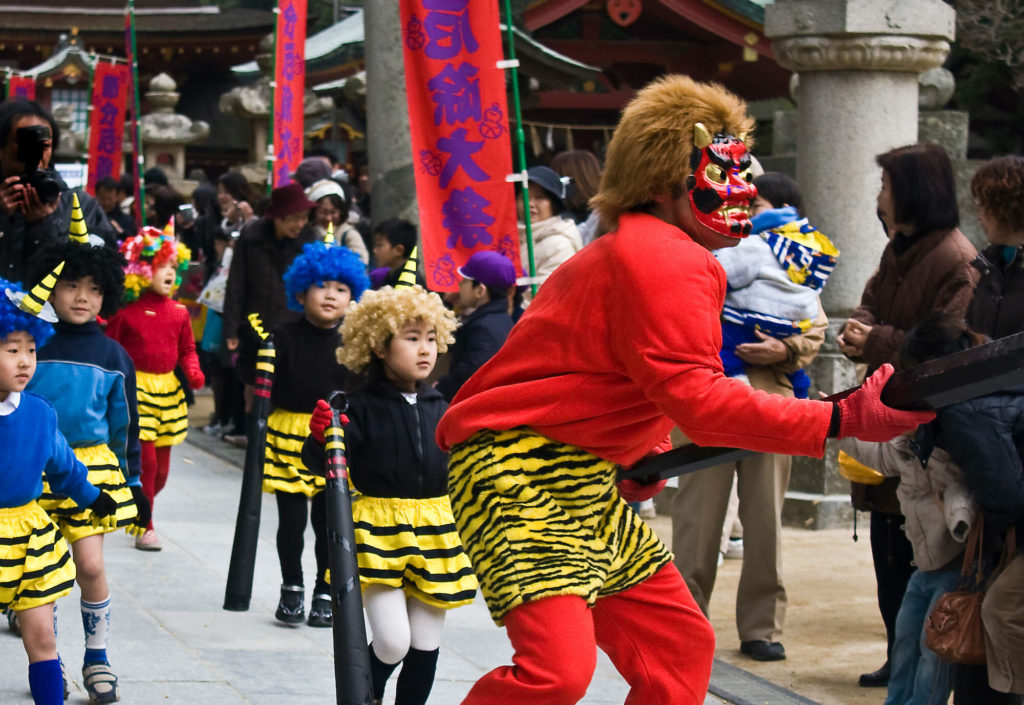
Setsubun Festival
February 3
Setsubun is the last day of winter and the beginning of spring. People throw beans with the saying “Bad luck out, Happiness in” and eat the same number of beans as their age for scaring away evil spirits and bring in good luck.
At Dazaifu Tenmangu shrine, Setsubun festival is held on the day. Bean-scattering takes place once in the morning and the afternoon. You can try to catch the pack of beans thrown from Shrine priests to get good fortune.

Poetry Composition Ceremony
First Sunday in March
In this elegant annual festival, you can see Waka poets dressd in traditional colorful Heian-period(794 to 1185 AD) costumes sitting along a stream among plum trees. Each poet must compose and complete a poem before a sake cup floating down the stream reaches them.



